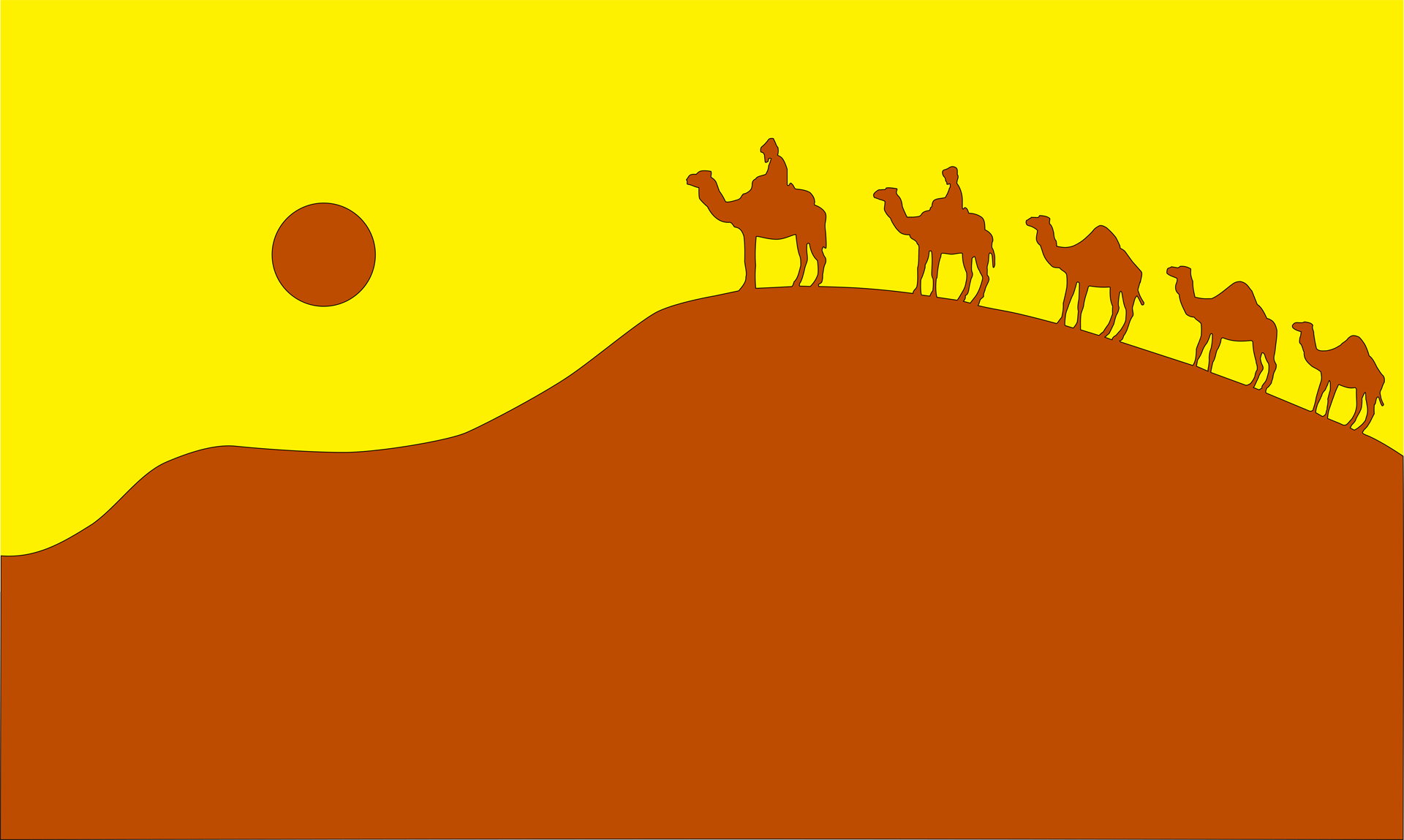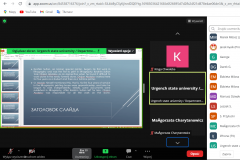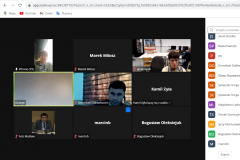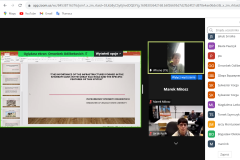Summary of the international conference “IT in Cultural Heritage (IT-CH’2023)”
On October 24–26, another edition of the international conference “IT in Cultural Heritage (IT-CH’2023)” took place at the Lublin University of Technology, an event which has been organised periodically since 2018 (alternately in Poland and Uzbekistan). The conference participants were guests from various scientific and university centres in Uzbekistan: Academy of Sciences of Uzbekistan, National University of Uzbekistan – Tashkent, Samarkand State University, Urgench State University, Chirchik State Pedagogical University, Centre for Contemporary History of Uzbekistan – Tashkent, “Silk Road” International University of Tourism and Cultural Heritage – Samarkand, Tashkent State University of Oriental Studies, Tashkent State Transport University, from museum centres: Registan Ensemble, Samarkand, Shakhrisabz State Museum-Reserve and central offices: Centre for increasing the social activity of students and pupils under the Ministry of Higher Education, Science and Innovation of the Republic of Uzbekistan, as well as from the University of Cyprus and the John Paul II Catholic University of Lublin. The conference was opened by: Vice-Rector for Science prof. Wojciech Franus, Dean of the Faculty of Electrical Engineering and Computer Science, prof. Paweł Węgierek, and the head of the Department of Computer Science, prof. Tomasz Zientarski.
The interdisciplinary conference brings together computer scientists and representatives of technical sciences with humanists representing historians, art historians, museologists and linguists. The area of scientific interest of the conference fits perfectly into the increasingly developing trend of digital humanities, digital history, digital history of art, digital archeology and digital tourism. 53 scientific papers were submitted to the conference (including 37 from outside the Lublin University of Technology), 33 of which were presented during the 6th plenary sessions (October 24 and 25), and the remaining ones in the online session the next day. The presentations can be grouped into several leading topics.
The Silk Road as a meeting place for people, cultures, religions and scientists
This topic was discussed in many speeches by speakers, primarily from Uzbekistan (Dr. A. Mullaev, prof. M. Hashimova, prof. D. Mukhamedova, prof. U. Abdullaev, Dr. S. Jumaeva, U. Urunkhodjaev) .in the historical, material and cultural aspect. The Silk Road is still a meeting space for people representing different cultures, nations and professions. This is evidenced by the implementation of a joint project by scientists from the Department of Computer Science of the Lublin University of Technology with four universities from Uzbekistan – the “3D Digital Silk Road” project, which was mentioned by the project manager, Dr. Elżbieta Miłosz, in her speech. The speakers pointed out the need to digitise objects of tangible and intangible heritage (e.g. dances) and the problems of properly creating exhibitions and presenting museum artefacts.
Threats to cultural heritage and modern methods of documenting it
The world of wars, armed conflicts and riots that have recently appeared in Europe and its surroundings has been synthetically described by prof. J. Montusiewicz (Syria, Nagorno-Karabakh, Transnistria, Kosovo, Lebanon, Ukraine, Israel, Belarus, Cyprus). It is a direct threat to objects of tangible cultural heritage, which should be digitised in 3D technology as soon as possible. A rational solution to this problem is the use of short-range photogrammetry methods (ground and air), which is based on taking a series of many photos of one object taken from different perspectives. It was noted that in creating a database of such photos, pictures taken by crowds of tourists and placed on various social networking sites may be helpful. The development of AI tools will be useful in the future for sorting millions of photos and acquiring them thematically.
Prof. M. Miłosz, using the example of Polish churches in Chicago in the USA, presented in his speeches the issue of the impact of demographic changes on the status of these buildings and their degradation. Desacralisation of existing churches results in their sale, demolition, reconstruction and change of their functions, which inevitably leads to the loss of the material national heritage of the Polish community. 3D models of the church of St. Adalbert were presented. (scanned during the 2nd scientific expedition of the project conducted by the ECCC Foundation from Lublin), which was completed at the last minute – two days later, the historic stained glass windows and sculptures were dismantled.
Dr. K. Żyła presented this issue on the example of wooden Romanian Orthodox churches from the 17th and 18th centuries, which employees of the Department of Computer Science scanned during a scientific expedition in 2022. These objects are abandoned for two main reasons: depopulation of villages located deep in mountain valleys and the construction of new brick churches in villages located on the main communication routes. Wooden objects become warehouses and deteriorate over time.
IT in education and popularisation of cultural heritage
An important issue repeatedly raised by the participants concerned the availability of teaching staff that would be able to cope with the challenges of modern education (prof. B. Eshchanov, Dr. I. Abdurakhmon, Dr. M. Dilfuza). Introducing knowledge of 3D computer technologies (scanning, modelling, reconstruction, printing, creating digital exhibitions and VR) are tools of the future school. There were also topics that connected Poland and Uzbekistan: S. Ibragimov talked about the presence of astronomers (Polish – Nicholas Copernicus and Johannes Hevelius) and Uzbek (Ulug Beg) in the museums of Samarkand, and J. Warakomski spoke of the usefulness of automatic translation of texts on the example of Ksawery Pruszyński’s story “The Trumpeter of Samarkand” translated into Tajik and Uzbek. The piece was written in 1942, when soldiers of the Polish Army in the East formed by General Władysław Anders were stationed in Uzbekistan. The method of popularising both 3D technology and Uzbek culture was presented by prof. J. Montusiewicz discussing organised workshops for children on printing fabrics using copies of traditional Uzbek stamps during the 19th Lublin Science Festival. Dr. R. Nargiza presented the development prospects of the so-called digital tourism, the main advantage of which is counteracting economic and social exclusion due to various types of disabilities.
The use of 3D technologies in creating digital models
The development of various 3D computer technologies in the area of devices, software and computing hardware was presented, among others, by Dr. J. Kęsik – short-range terrestrial photogrammetry on the example of generating digital 3D models of a bell and Pieta (Chicago, USA). S. Skulimowski argued for VR technologies in creating digital exhibitions, examining cultural competences and promoting cultural heritage, Dr. M. Badurowicz presented the use of a hybrid approach to generating realistic digital 3D models using 3D scans and aerial photogrammetry on the example of an 18th century wooden church from the Museum of Folk Architecture in Sanok, and Dr. P. Powroźnik described the use of motion capture technology to acquire data of regional dances from the Greek part of Cyprus. Representatives of Uzbekistan: Dr. A. Safarov, T. Boltaev, R. Kayumov, as well as Dr. M. Buzrukov and N. Khushvakov presented technical and organisational aspects of scanning objects of the Timurid period (14th-17th centuries), mosques and mausoleums in Samarkand, the remains of Amir Timur’s palace and his town in Shakhrisabz, or archaeological sites.
Methods of sharing cultural heritage objects
An important topic discussed at the conference were modern methods of sharing cultural heritage objects that could be used in museology. Traditional museums provide access to their artefacts, usually placed in closed display cases. Nowadays, we strive to ensure that selected objects or their copies can be touched in museums. Dr. S. Korga, using the example of a copy of a 12th century water vessel from the excavations of the city of Afrasiab in Uzbekistan, presented a method of creating an object that was adapted to the needs of blind people. Signatures in Braille were incorporated into the surface of the vessel at the stage of a digital 3D model obtained after scanning the original vessel. Dr. M. Barszcz introduced methods of 3D modelling of architectural objects and their scaling before 3D printing, so that the sizes of the objects ensured that blind people could recognise the shapes of decorative elements located on their surfaces. Dr. K. Dziedzic discussed problems related to reducing the grid of digital models and thus reducing their size to make them suitable for presentation on websites and digital museums.



